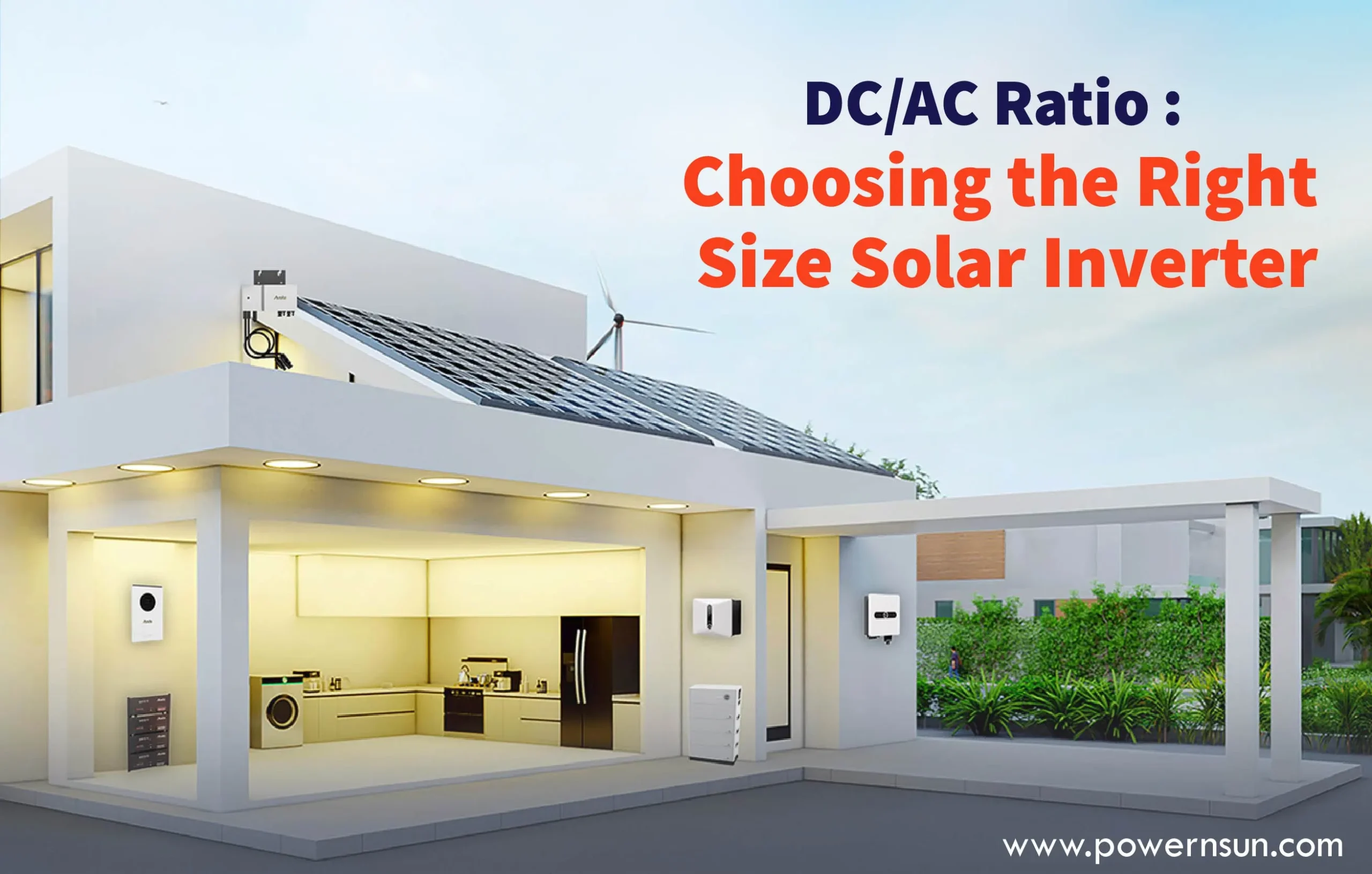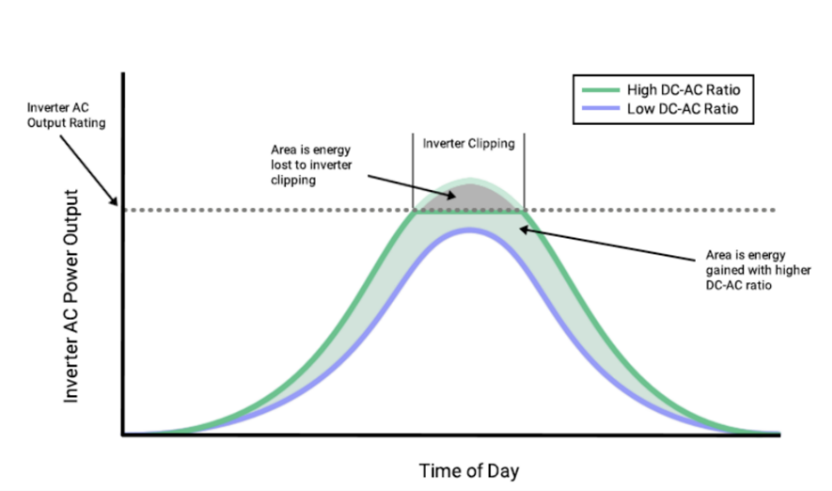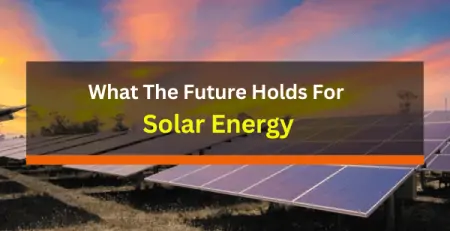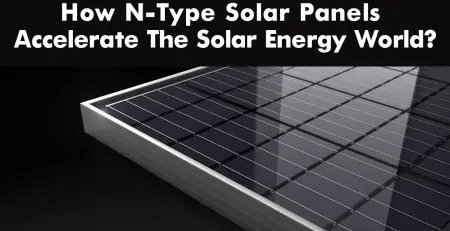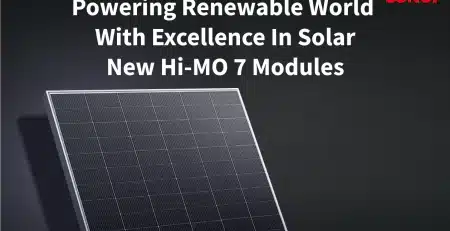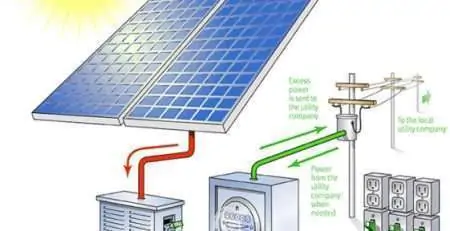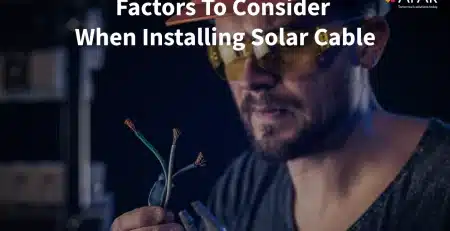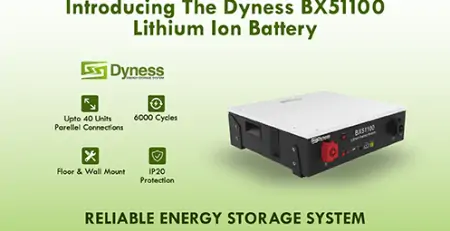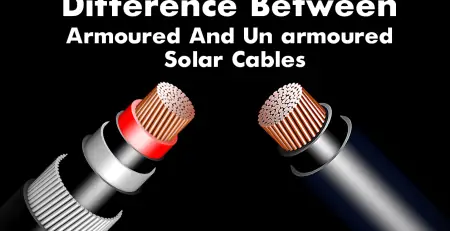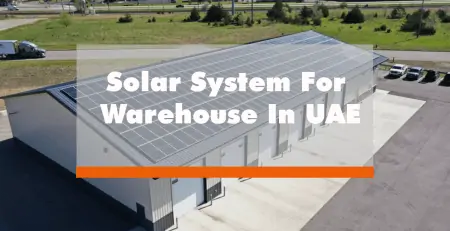DC/AC Ratio: Choosing the Right Size Solar Inverter
Selecting the right solar inverter for your project involves understanding the DC-to-AC ratio and its impact on your system’s efficiency. This article explores the significance of the DC-to-AC ratio, how it affects energy production, and tips to optimize your solar installation.
Understanding the DC-to-AC Ratio
The DC-to-AC ratio, also known as the Inverter Loading Ratio (ILR), is the ratio of the installed DC capacity of your solar panels to the AC power rating of your inverter. Typically, it’s beneficial to have a DC-to-AC ratio greater than 1, allowing your system to capture more energy throughout the day, even when production is below the inverter’s maximum capacity.
Figure show Inverter AC output over the course of a day for a system with a low DC-to-AC ratio (purple curve) and high DC-to-AC ratio (green curve). The chart represents an idealized case; in practice, power output varies considerably based on weather conditions.
What is Inverter Clipping
Inverter clipping, or power limiting, occurs when the DC power output of your solar array exceeds the inverter’s AC power rating. During peak production times, the excess power is “clipped” to prevent overloading the inverter, capping the output at the inverter’s maximum capacity. While this ensures the inverter operates within its limits, it also means some potential energy is lost.
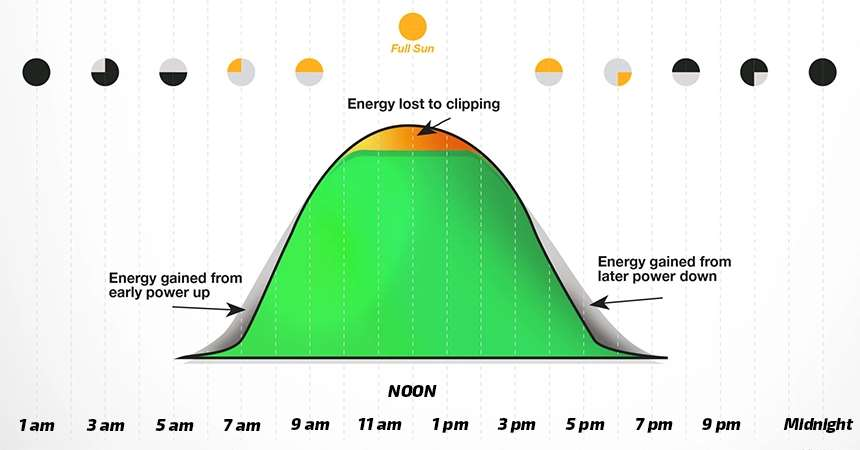
How to Prevent from Inverter Clipping
To mitigate inverter clipping, it’s crucial to model the system’s performance accurately. Oversizing your solar array can help capture more energy during non-peak hours, but it comes with a trade-off. You might either invest in an additional inverter or accept some energy loss due to clipping.
For example, consider a ground-mounted system with a 100 kW central inverter. If designed with a DC-to-AC ratio of 1, clipping won’t occur, but the inverter’s full capacity might not be utilized. Increasing the DC capacity can enhance energy capture but will require balancing the costs of additional inverters against the benefits of increased energy harvest.
Selecting the Right Input Voltage
The input voltage of your inverter should match the solar panel and battery bank. For lower power ratings (like 100 watts), input voltages typically include 12V, 24V, or 48V. Ensure that all components share the same voltage to maintain system compatibility.
What is Inverter Stacking
Inverter stacking involves wiring multiple inverters together to increase either the output voltage (series connection) or the power output (parallel connection). This practice is essential for systems requiring more than the capacity of a single inverter, particularly in larger installations. The largest 48V battery-based inverter stacks can reach up to 60kW, sufficient for most residential applications.
Key Takeaways
- Optimize Energy Harvest: Oversizing your solar array relative to the inverter’s rating allows for increased energy capture throughout the day.
- Manage Inverter Clipping: Clipping occurs when the solar array produces more energy than the inverter can handle. Balancing additional inverter costs against potential energy loss is crucial.
- Ensure Compatibility: Match the input voltage of your solar panels, inverters, and battery bank to ensure seamless operation.
- Consider Inverter Stacking: For larger systems, stacking inverters can increase output voltage or power, but ensure compatibility by checking manufacturer specifications.
Powernsun is a top-tier supplier of inverters from leading brands like Sungrow, Solis, Deye, and Solplanet. If you’re interested in our products or need assistance with your solar project, please contact us.

